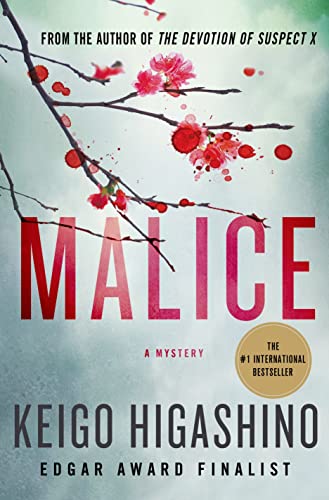Keigo Higashino is one of the masters of mystery/crime novels, with his works being quite popular while frequently receiving movie and TV adaptations. As is common in Japanese books of the category, the whodunnit element in the majority of his works is actually a secondary one, with the why and how being the main ones. “Malice”, the fourth book of his featuring police detective Kaga as the protagonist, follows the same path, as a confession about the murder is offered early one, providing, though, not an ending, but the beginning of a series of plot twists.
Acclaimed bestselling novelist Kunihiko Hidaka is found brutally murdered in his home on the night before he's planning to leave Japan and relocate to Vancouver. His body is found in his office, a locked room, within his locked house, by his wife, Rie, and his best friend, Osamu Nonoguchi, both of whom seem to have rock solid alibis. Eventually, detective Kaga is also called in to investigate the case, but to his surprise, he recognizes Osamu, as both were colleagues at the same public school. Kaga went on to join the police force while Nonoguchi eventually left to become a full-time writer, though with not nearly the success of his friend Hidaka.
As Kaga continues to investigate the past of the two friends, he realizes that their relationship was far more complex than what Osamu described, in a series of twists revealed that lead to a confession. Kaga, however, is not yet fully convinced, and wants to investigate more.
Considering that the confession here essentially comes in the first third of the book, it is quite interesting to show how Keigo Higashino retains interest for the whole of the 281 pages (Little Brown edition) of the novel. The first tool is Kaga's obsession with investigating more, which essentially derives from hunches, as something does not sit well with him, even when everyone else considers the case closed. This approach could be considered illogical, but Higashino manages not to allow it to move in that path, by having the two protagonists being former acquaintances, an element that allows Kaga to know more about Osamu than he would if he had met him for the first time, while also giving him a “way in” to his investigation, which actually begins in the school the two worked. Furthermore, this element allows for a more thorough analysis of the three men, including Kunihiko, while giving Higashino the opportunity to add to the context, by including the concepts of how the past shapes the future, bullying and the way it “unfolds” within the school environment, and how people are frequently forced to do what they need and not what they want with their life.
The second tool he uses is the change in the presentation style, with the book starting in the first person by Osamu, and then changing a number of times, to Kaga in the first person, to the third person, to analysis of the book Kunihiko had written, to Kaga's notes, to interviews with various people from the past of the two friends, and finally, one in the first person where the replies of the second individual present are just highlighted through the responses of the former. These changes work excellently for the progression of the story and the overall readability of the book, essentially carrying it from beginning to end while showcasing Higashino's intense command of the medium.
Lastly, a number of thorough comments on how the publishing industry works, particularly in terms of who gets published, who gets famous and why, and the whole concept of the rights holders, which actually adds an additional remark on human nature in the face of death and money, conclude the rich context of the book.
Granted, there are moments, particularly in the ending chapter, as is usually the case in crime novels, that the conclusions Kaga reaches are somewhat far-fetched, but in general, the case is excellently constructed while including enough additional elements to keep the interest from wavering even for a page. Lastly, the simplicity of the language adds to the readability of the book, a trait quite frequent in Japanese literature, where rather rich context is presented without unnecessary language complexities.
“Malice” is an excellent mystery/crime novel, as intricate as it is easy to read, and a testament to the excellent writing skills of Keigo Higashino.

















